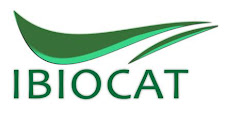


(From left to right: 3D molecular structure of enzymes Alcohol-Dehydrogenase, Trioso-Phosphate Isomerase, Lysozyme C )
A few years ago, artist John Dunn and biologist Mary Anne Clark collaborated on the sonification of protein data to produce the audio CD "Life Music." “When we began the protein music project, we wanted to convey both something about primary aminoacid sequence and something about the folding patterns of proteins. Our goal was to create an audio CD album that would stand on its own as art music, and at the same time offer empirical proof of the esthetic patterning of nature’s deep structure”.
In the following article, authors describe the process by which this collaboration merges scientific knowledge and artistic expression to produce soundscapes from these basic building blocks of life, that may be encountered as esthetic experiences, as scientific inquiry, or both. The rationale for both artistic use of the science and scientific use of the art is described from the separate viewpoints of artist and scientist.
Life Music: The Sonification of Proteins by John Dunn and Mary Anne Clark
http://lea.mit.edu/isast/articles/lifemusic.html
Protein Music Samples (Pieces from the Life Music CD).
In each piece below, pitch is determined by aminoacid identity. The structural features of the protein are emphasized by choosing instrumentation according to protein folding pattern, with different instruments representing regions of alpha-helix, beta-strands and turns. In some pieces, different instruments may identify functional domains of the protein.
Enjoy!
- Alcohol Dehydrogenase Listen! http://whozoo.org/mac/Music/adh.ra
- Triose Phosphate Isomerase Listen! http://whozoo.org/mac/Music/tpi2x.ra
Learn more about protein music by reading Protein Primer: A Musical Introduction to Protein Structure and visiting the Website http://whozoo.org/mac/Music/index.htm










